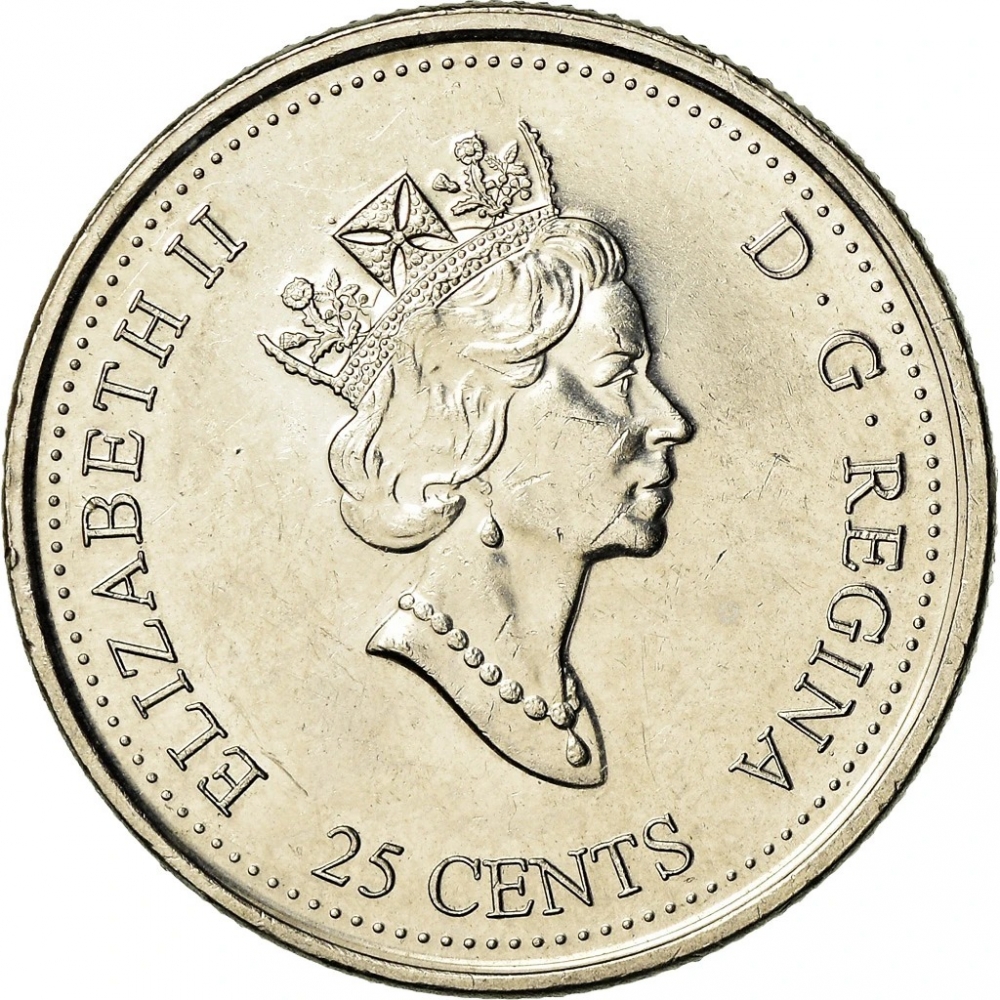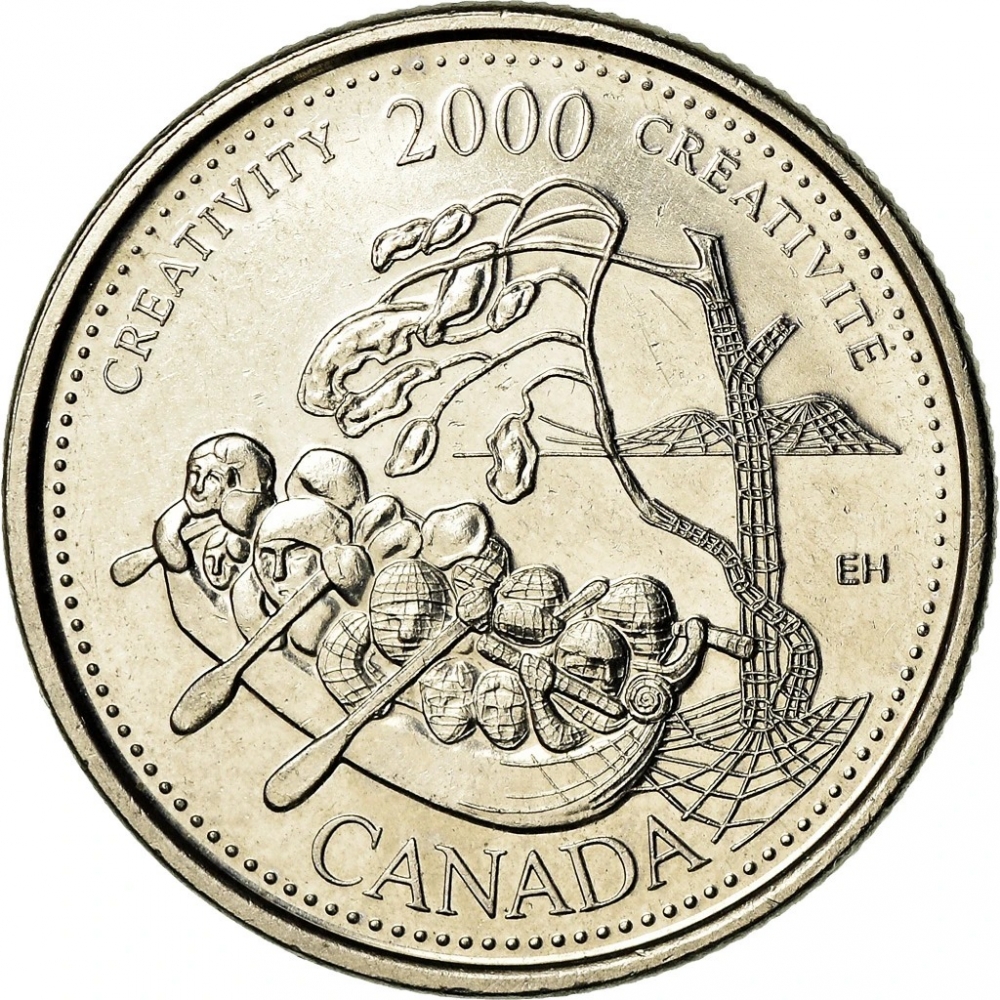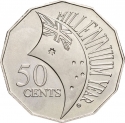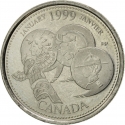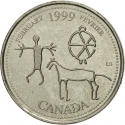You are about to finish your registration. Please check your mailbox (including spam folder). There should be a letter with a confirmation link. Check setting to make sure that your e-mail address is correct.
Send letter againDescription
To celebrate the new millennium, Canada created a two-year circulating commemorative program that was conducted in two parts: one in 1999 and one in 2000. Each program released 12 quarters per year and each featured a unique design.
The 1999 designs were meant to look back on Canada's past, honouring the development and achievements of the nation, while the 2000 designs depicting the hopes and dreams for the future of Canada. While the 1999 coins were labelled with their month of issue, the 2000 coins were labelled with the relevant theme.
Obverse

|
Depicts the third portrait of HM Queen Elizabeth II, when she was 64 years old, facing right, wearing the George IV State Diadem and surrounded by the inscription. This was the first to be designed by a Canadian, Dora de Pédery-Hunt. ELIZABETH II D • G • REGINA |
|---|---|
Reverse

|
A scenery, which shows an insight of arts in three millenniums, in the left part of the coin, a boat in Inuit art - in the upper part, a tree in style of the Group of Seven - in the right part, the landscape is rendered in wireframes, all surrounded by the country name below and the bilingual inscription "Creativity 2000" above. CREATIVITY 2000 CRÉATIVITÉ |
| Edge |
25 Cents
3rd portrait
Third Millennium
Creativity, Expression for all Time
Subscribe series
KM# 379 Schön# 380
Third Millennium
Creativity, Expression for all Time
